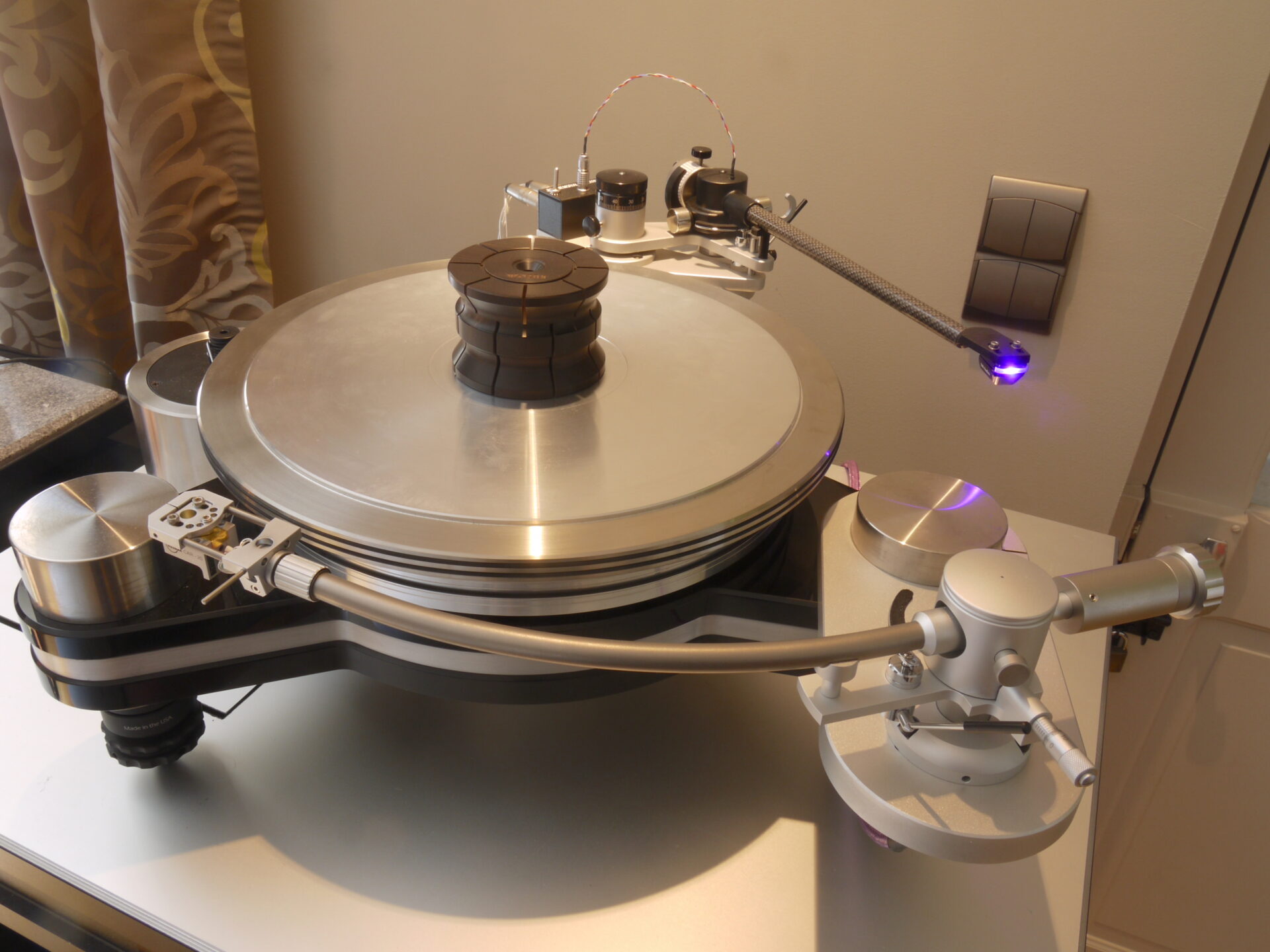A different kind of arms race…
By Roy Gregory
Whilst the VPI Avenger might look strikingly different from its immediate predecessor, the resolutely rectangular and distinctly retro Classic 4, this is no design step-change for the venerable US brand. Appearances can be and in this case are, deceptive. Rather than a change of direction, the Avenger’s DNA has simply skipped a generation, while still taking on board the lessons learnt with the phenomenally capable and affordable Classics. The 45mm thick, three-layer, aluminium/acrylic laminated chassis and the separate, cylindrical motor housing are drawn from the HR-X and TNT 4 respectively: the platter, main bearing and peripheral clamp have evolved across recent generations of VPI decks, but in this form they all graced the Classic series; also the basic form of the decoupled levelling feet goes all the way back to the TNT 4. Evolution rather than revolution is the name of this game, even if the aesthetics have sidestepped into 1950’s sci-fi and The Forbidden Planet. Still – that’s no bad thing…

Of course, what is different is the skeletal, pared-back plinth with its three feet. Although directly derived from the TNT, the free-standing chassis and separate motor arrangement has in one simple step, solved the biggest challenge facing VPI owners. Despite its generous – okay, make that out-sized – footprint, the TNT was only ever really comfortable supporting a single arm. Various add ons were offered over the years but none really delivered a sensible solution for this most sensible of all turntable brands. The pressure was relieved (at least internally) by the exchangeable arm-tops available for the JMW arm, but not every TNT owner was wed to the company’s tonearm and, increasingly, analogue aficionados need or at least expect to be able to run more than one arm/cartridge combination.
Well, with the Avenger they can. By shifting to a symmetrical, three-pointed star format and using the upper boss of each foot to mount the armboards, the deck will take not just two but three arms. The length of the armboards and the ability to rotate them around each mounting boss (to set P2S distance) means that those arms can be any length you choose. True to the VPI ethos it’s a solution that’s as simple as it is elegant and versatile – and one that makes the Avenger invaluable to any reviewer working with arms and/or cartridges, or any end-user wanting to run more than one tonearm: perhaps to include a permanent mono rig, or maybe just a different sounding front-end combination.
Audio Lego-land?
Another typically VPI aspect to the design is its modular and upgradable nature. VPI decks have always been incredibly straightforward in terms of design and engineering, with an almost Bauhaus rectitude to the elimination of the unnecessary. The Avenger takes that ‘what you see is what you get’ approach to its logical extreme. In its basic form, the deck consists of a free-standing chassis and separate motor housing. To it you can add an outboard power supply (the Analog Drive system or ADS) and the Peripheral Rim Clamp. This will deal with all but the most severe rim warps or can, simply be used – beneath the record, sat directly on the platter rebate – to add additional peripheral mass. I’d consider both to be pretty much essential, with clearly audible musical benefits in terms of stability, pace, dynamics and timing. The ability to simply park the peripheral clamp on the platter so that you don’t need to remove and replace it for every record is a stroke of typical VPI genius, testament to the fact that Harry Weisfeld always built products for himself – a philosophy the company continues to follow today.

